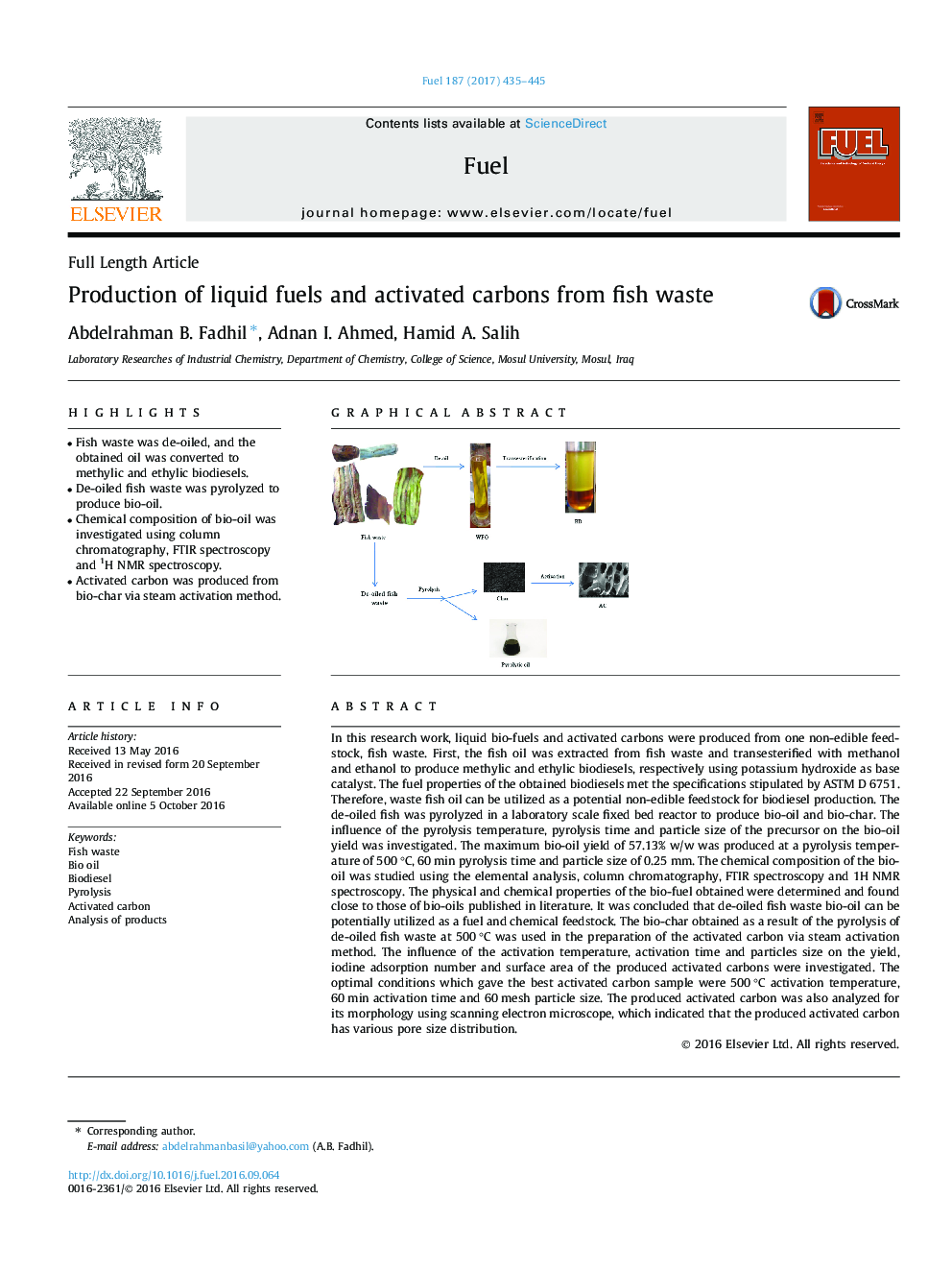| Article ID | Journal | Published Year | Pages | File Type |
|---|---|---|---|---|
| 6475993 | Fuel | 2017 | 11 Pages |
â¢Fish waste was de-oiled, and the obtained oil was converted to methylic and ethylic biodiesels.â¢De-oiled fish waste was pyrolyzed to produce bio-oil.â¢Chemical composition of bio-oil was investigated using column chromatography, FTIR spectroscopy and 1H NMR spectroscopy.â¢Activated carbon was produced from bio-char via steam activation method.
In this research work, liquid bio-fuels and activated carbons were produced from one non-edible feedstock, fish waste. First, the fish oil was extracted from fish waste and transesterified with methanol and ethanol to produce methylic and ethylic biodiesels, respectively using potassium hydroxide as base catalyst. The fuel properties of the obtained biodiesels met the specifications stipulated by ASTM D 6751. Therefore, waste fish oil can be utilized as a potential non-edible feedstock for biodiesel production. The de-oiled fish was pyrolyzed in a laboratory scale fixed bed reactor to produce bio-oil and bio-char. The influence of the pyrolysis temperature, pyrolysis time and particle size of the precursor on the bio-oil yield was investigated. The maximum bio-oil yield of 57.13% w/w was produced at a pyrolysis temperature of 500 °C, 60 min pyrolysis time and particle size of 0.25 mm. The chemical composition of the bio-oil was studied using the elemental analysis, column chromatography, FTIR spectroscopy and 1H NMR spectroscopy. The physical and chemical properties of the bio-fuel obtained were determined and found close to those of bio-oils published in literature. It was concluded that de-oiled fish waste bio-oil can be potentially utilized as a fuel and chemical feedstock. The bio-char obtained as a result of the pyrolysis of de-oiled fish waste at 500 °C was used in the preparation of the activated carbon via steam activation method. The influence of the activation temperature, activation time and particles size on the yield, iodine adsorption number and surface area of the produced activated carbons were investigated. The optimal conditions which gave the best activated carbon sample were 500 °C activation temperature, 60 min activation time and 60 mesh particle size. The produced activated carbon was also analyzed for its morphology using scanning electron microscope, which indicated that the produced activated carbon has various pore size distribution.
Graphical abstractDownload high-res image (80KB)Download full-size image
